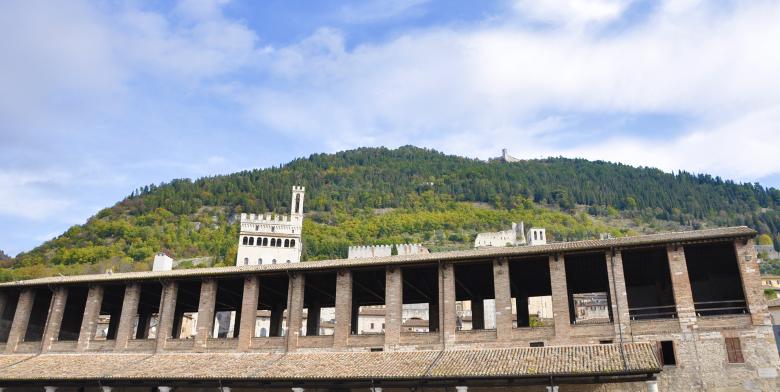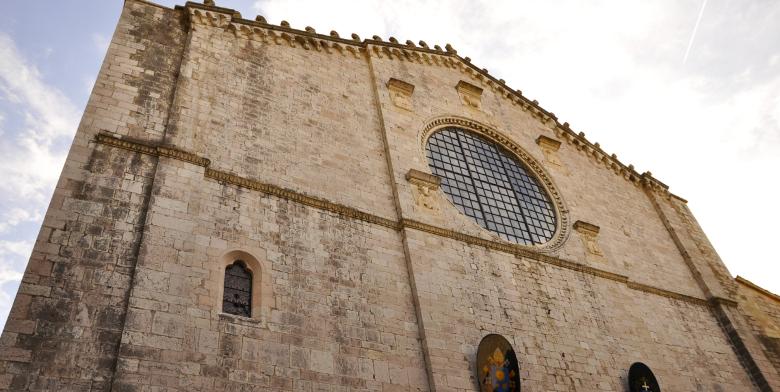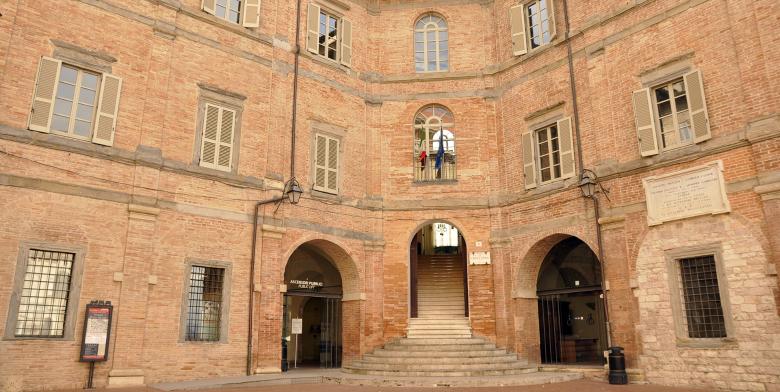The construction of a great church and convent dedicated to Francis, just a few years after his death, was greatly desired by the city of Gubbio, which had taken him in and adopted him.
The building features an
ogival layout, with an incomplete facade that nevertheless still presents a beautiful
Gothic doorway and a cornice with suspended frames topped with a small rose window. The
three apses follow a polygonal structure interrupted by mullioned windows.
The interior is subdivided into a nave with side aisles supported by 14 tall columns with octagonal bases. The cross vaults of the ceiling date from the transformation of the building in the 18th century. The lateral walls, which were originally covered in frescoes, have lost part of their splendour, but the apses still feature important works of the 13th-15th centuries.
| The left apse features the Stories from the life of the Virgin, over 17 panels, a highly regarded cycle from the early 15th century, created by Ottaviano Nelli.
The central apse, in the top section, features a fresco of Jesus on the Throne with Saint Peter, Saint Paul, Saint Francis and Saint Anthony at his side, works created by a local follower of the Master of Saint Francis during the second half of the 13th century.
The right apse, next to which stand the ancient ruins of the Storehouse, features frescoes from the 13th and 14th centuries: in the top part, two episodes of the life of Saint Francis; in the bottom centre, the Saviour; and on the sides, the Evangelists, between cornices. On the walls are frescoes of Saints. |






























